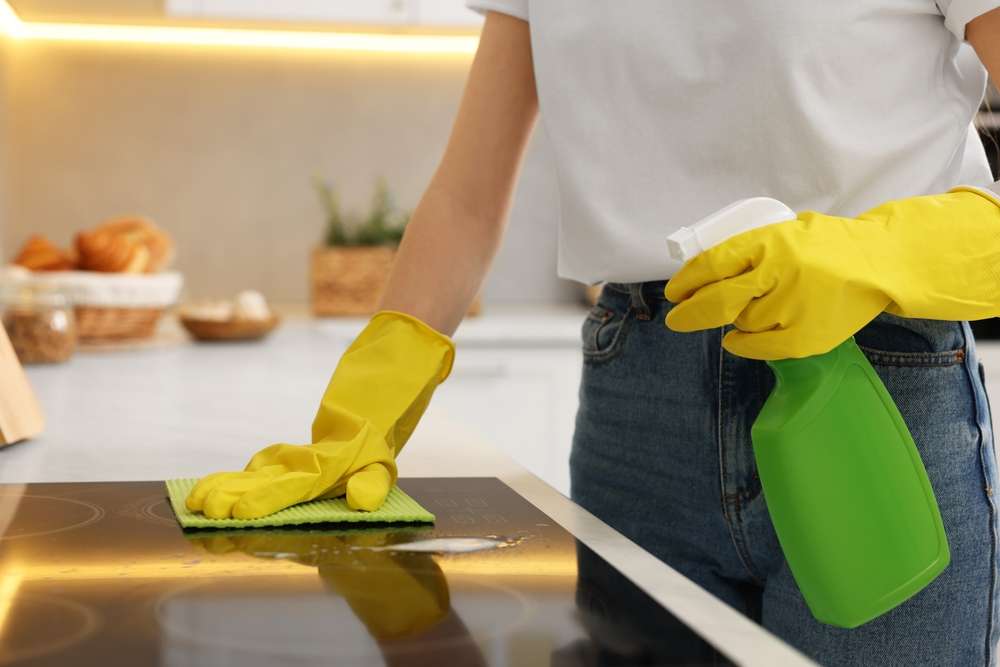Degreaser Spray for Kitchen Cleaning and Grease
A good degreaser spray turns a grimy kitchen into a clean, usable space quickly by breaking down stubborn grease and baked-on residues on stovetops, hoods, ovens, and counters. Whether you’re tackling daily spills or deep seasonal cleaning, understanding how degreasers work and how to use them safely will save time and protect surfaces. This article explains what a kitchen degreaser spray is, how it removes grease, safe use tips, and how to choose the right product for your needs.

What is a kitchen degreaser spray?
A kitchen degreaser spray is a formulation designed to dissolve and lift oils, fats, and carbonized food residues. Typical ingredients include surfactants, solvents, and sometimes alkaline agents that emulsify grease so it can be wiped away. Many sprays combine quick-acting solvents with water-rinseable components to reduce residue. Products range from heavy-duty industrial formulas to milder, food-safe sprays for everyday kitchen cleaning. Choosing the right strength depends on the surface—porcelain and metal tolerate stronger formulas than painted or laminated surfaces.
How does a degreaser remove kitchen grease?
Degreasers remove grease by breaking the bond between the oil and the surface. Surfactants lower surface tension and surround grease particles, forming micelles that allow oils to mix with water, while solvents dissolve some types of fats. Alkaline ingredients can saponify grease, turning fats into soap-like compounds that rinse easily. Mechanical action—scrubbing or wiping—works with the chemical action to lift soiling. Heat can accelerate the process, so applying a degreaser when the surface is warm (but not hot) often improves results. Proper dwell time lets the chemistry work before wiping.
How to use a degreaser spray for cleaning?
For effective kitchen cleaning with a spray degreaser, start by removing loose debris and ventilating the area. Test the product on an inconspicuous spot to check surface compatibility. Spray an even layer, allow the recommended dwell time (often 30 seconds to a few minutes), then agitate with a cloth or soft brush if needed and wipe or rinse. For heavy buildup, repeat or let the product sit longer per label instructions. Always follow label directions for dilution and surface limitations, and avoid mixing with other cleaners like bleach or ammonia to prevent hazardous reactions.
Is degreaser safe for kitchen surfaces?
Safety depends on the product formulation and the surface being cleaned. Strong alkaline or solvent-based degreasers may damage painted finishes, some plastics, or delicate countertops, while milder, water-based sprays are better for sealed surfaces and food-prep areas. Wear gloves and eye protection when using concentrated formulas, and rinse thoroughly if the product isn’t labeled as food-contact safe. This article is for informational purposes only and should not be considered medical advice. Please consult a qualified healthcare professional for personalized guidance and treatment. If accidental skin or eye contact occurs, follow the product’s first-aid instructions and seek medical attention if symptoms persist.
Choosing the right spray degreaser
Select a degreaser based on the types of grease you handle and the surfaces in your kitchen. For everyday cleaning, look for non-abrasive, water-rinseable sprays labeled safe for countertops and appliance finishes. For heavy-duty jobs—oven doors, exhaust hoods—choose a stronger solvent or alkaline formula but use it sparingly and test first. Consider environmentally preferable or biodegradable options if wastewater or indoor air quality is a concern. Check label claims like “food-contact safe,” “no-rinse,” or “non-corrosive” and preference products with clear instructions to avoid misuse.
Kitchen cleaning maintenance and eco considerations
Regular maintenance using a mild spray degreaser reduces the need for harsh chemicals and intensive scrubbing later. Wipe up spills promptly, clean stovetops after each use, and deep-clean exhaust filters periodically. To minimize environmental impact, use concentrated products diluted per instructions, avoid over-application, and dispose of wastewater according to local guidelines if it contains high grease loads. For households concerned about chemical exposure, plant-based degreasers can be effective on light- to medium-duty grease; for tougher jobs, alternate targeted heavy-duty treatments with careful ventilation and protective gear.
Conclusion
A degreaser spray is a practical tool for keeping kitchens clean and free of grease when chosen and used appropriately. Understanding the product’s chemistry, matching strength to surface, following safety directions, and adopting regular maintenance habits will deliver the best results while minimizing damage and environmental impact.






